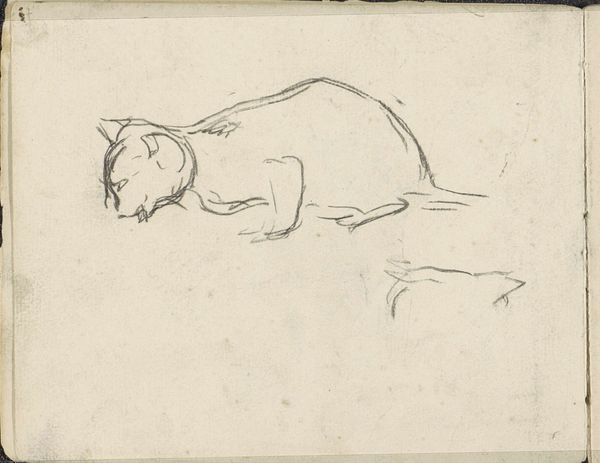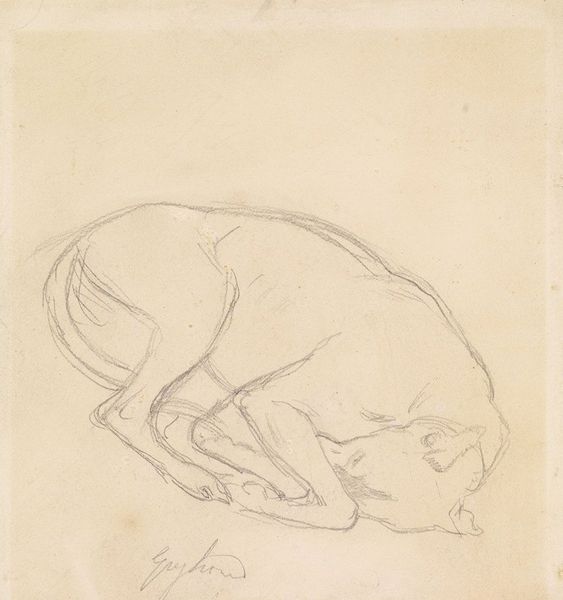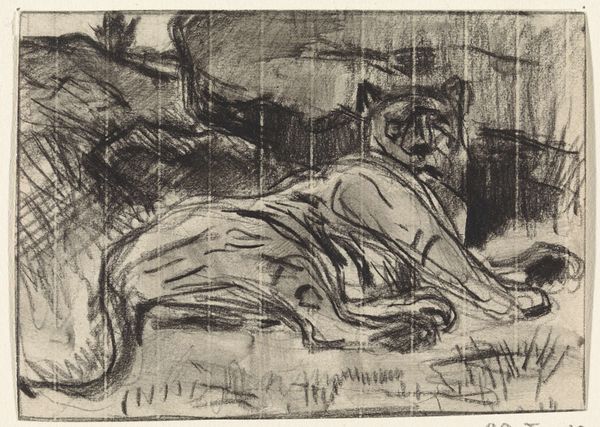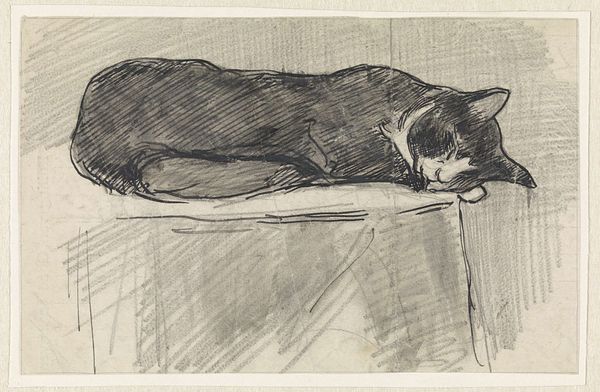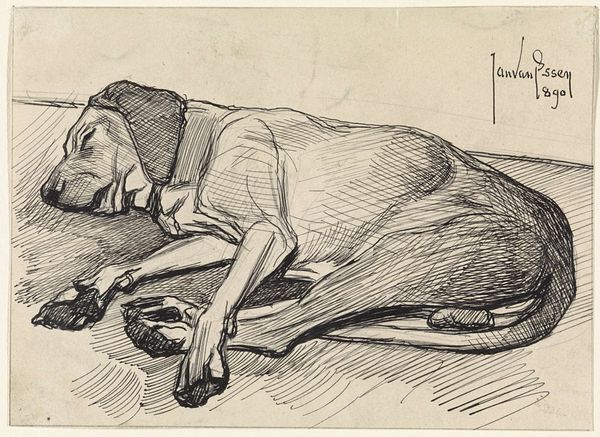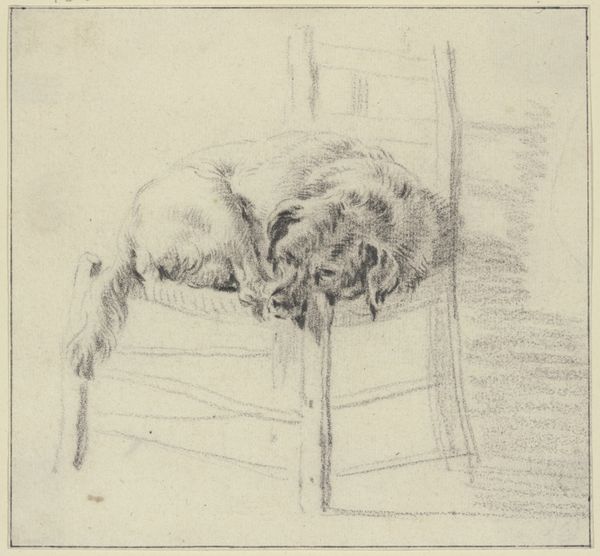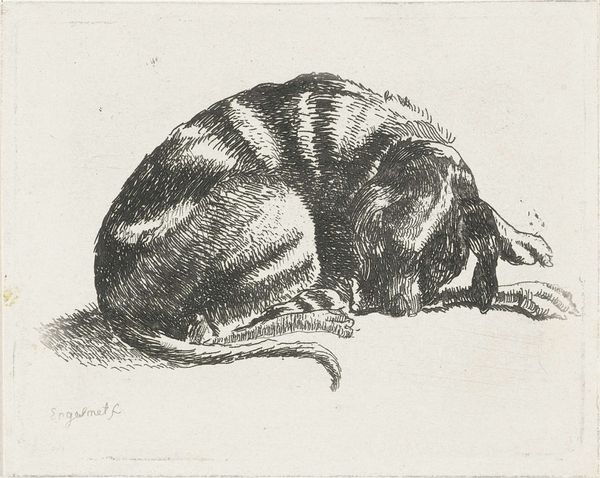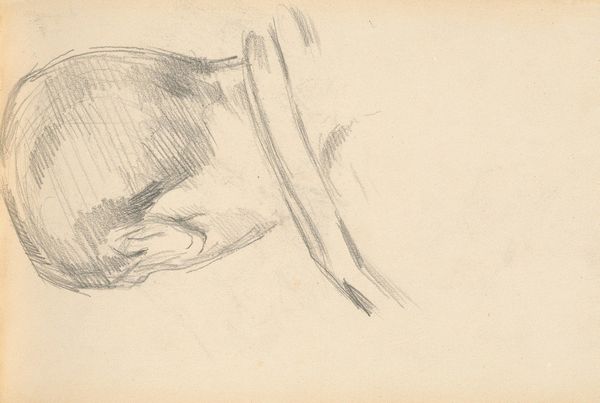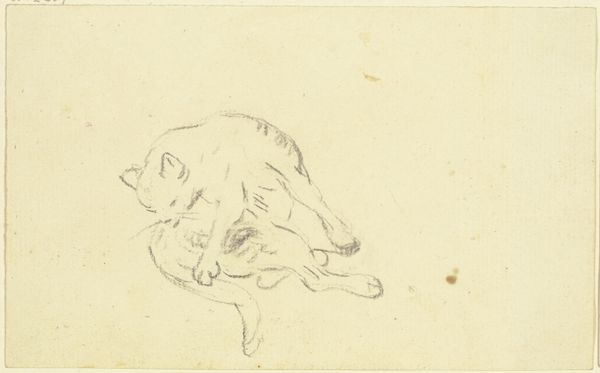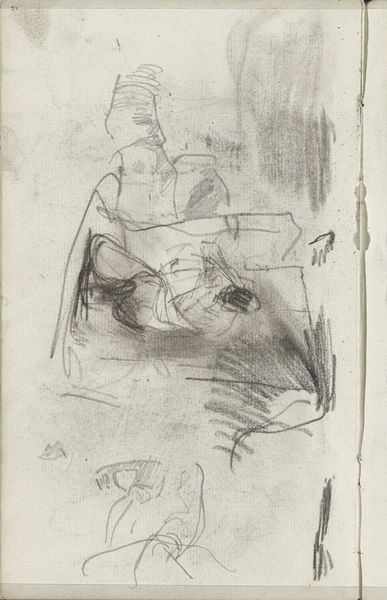
Dimensions: height 117 mm, width 193 mm
Copyright: Rijks Museum: Open Domain
Editor: So, here we have George Hendrik Breitner's "Cat Licking Itself," a pencil drawing on paper, made sometime between 1867 and 1923. It strikes me as very intimate, a fleeting moment captured. The lines are so loose and immediate. What do you see in this piece? Curator: This deceptively simple sketch opens up a fascinating discourse on domesticity, observation, and the gaze. Cats, historically, have been laden with symbolism – from the sacred in ancient Egypt to symbols of independence and mystery. What do you think Breitner intended to convey by capturing this mundane act? Editor: I suppose I just saw it as a quick study, an artist practicing. But maybe there's more to it. The cat seems so absorbed, self-contained. Is that deliberate, do you think? Curator: Consider the societal shifts during Breitner's time. Rapid urbanization, industrialization… people perhaps felt increasingly disconnected. Could the cat, in its self-sufficient grooming, represent a longing for autonomy, a return to a simpler, more self-reliant existence? Does that resonate with your understanding of the period? Editor: That's a really interesting perspective. I hadn't thought of the cat as a symbol of resistance, almost. More of a personal escape for the artist, perhaps? Curator: Perhaps. Or perhaps Breitner is simply reminding us of the intrinsic connection between the human and animal worlds, an attempt to reveal shared needs and motivations, bridging cultural gaps. After all, cleansing and self-care is not exclusive to one species. What have you learned from examining this artwork today? Editor: That even the simplest image can hold complex meanings, depending on how you look at it. Thanks! Curator: Precisely. Never underestimate the symbolic power embedded in the everyday.
Comments
No comments
Be the first to comment and join the conversation on the ultimate creative platform.
